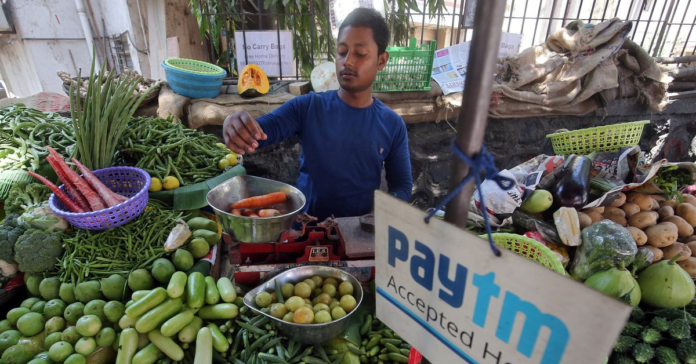MUMBAI, June 30 (Reuters Breakingviews) – India is shaping its digital payments system into a credit engine. It wants banks to offer small loans through the channel residents use to transfer money via their mobile phones. But while the latest official effort to accelerate financial inclusion is gaining traction and will finally allow banks to monetise the homegrown system, it will test the safe limits of growing lending fast.
The Unified Payments Interface (UPI) is used by 300 million Indians and facilitates 9 billion consumer transactions worth $180 billion per month. Instead of using cash or swiping a debit card to buy vegetables, a Starbucks coffee or an airline ticket, Indians use UPI apps powered by Alphabet’s (GOOGL.O) Google and Walmart’s (WMT.N) PhonePe at zero cost.
Reuters Graphics Reuters Graphics
UPI is an obvious rail to transmit credit. Its users are mostly smartphone owners, and therefore aspirational. Yet barely half of them have active loans and only up to 10% have a credit card. That’s why the regulator is allowing the use of RuPay credit cards, the country’s low-cost answer to Mastercard (MA.N) and Visa (V.N), for UPI payments. Merchants don’t pay a fee on RuPay card transactions worth less than 2000 rupees ($24.40), and fees are capped at 2%, rather than up to 3% global card operators charge.
The one-year-old initiative is now gaining traction. At least seven banks including HDFC Bank (HDBK.NS), Axis Bank (AXBK.NS), Kotak Mahindra Bank (KTKM.NS) and Punjab National Bank (PNBK.NS) have gone live with the feature. In April the regulator went further, enabling banks to offer pre-approved overdraft accounts via UPI.
It’s a fillip to RuPay, which accounts for a quarter of all new credit cards issued, though Visa and Mastercard will remain more popular with higher spenders who want plastic that works seamlessly overseas. One97 Communications’ (PAYT.NS) Paytm will also benefit as its network of merchants means it is the largest recipient bank for UPI payments.
Pushing credit on UPI will allow merchants to save on the cost of owning a point of sales terminal. And it adheres to the Reserve Bank of India’s preference for consumer loans to sit within banks, rather than with third-party applications; the regulator’s crackdown last year on prepaid credit facilities issued by wallet providers hurt Tiger Global-backed Slice and Accel-backed Uni.
Yet, the blistering pace of growth in unsecured loans raises concerns. Credit card receivables and lending for purchases of appliances both grew around 30% year on year in April – nearly twice the rate of overall bank loan growth. Delinquencies in unsecured loans were higher in December 2022 than before the pandemic, per TransUnion Cibil.
Fast growth in the financial industry may be a natural byproduct of deepening credit uptake in a quickly expanding economy, as analysts at Bernstein point out. But the regulator is both seeking to support official goals of democratising credit while also warning lenders against “over-aggressive growth”. It muddies both worthy messages.
Follow @ShritamaBose on Twitter
CONTEXT NEWS
The Reserve Bank of India on April 6 announced a plan to let banks offer pre-sanctioned credit lines to consumers through the country’s Unified Payments Interface (UPI), its homegrown real-time digital payments channel.
Earlier, in June 2022, the central bank had allowed lenders to link RuPay credit cards to UPI accounts. HDFC Bank became the first private bank to go live on UPI with RuPay credit cards in February. Paytm tied up with SBI Cards and Payment Services in May to issue RuPay credit cards to its consumers via UPI, offering cashbacks on small-value payments.
The central bank is looking to tighten scrutiny on unsecured lending portfolios of banks amid a growing risk of potential defaults, Reuters reported on June 13, citing four unnamed sources from the banking industry.
Editing by Una Galani, Pranav Kiran and Thomas Shum
Our Standards: The Thomson Reuters Trust Principles.
Opinions expressed are those of the author. They do not reflect the views of Reuters News, which, under the Trust Principles, is committed to integrity, independence, and freedom from bias.




